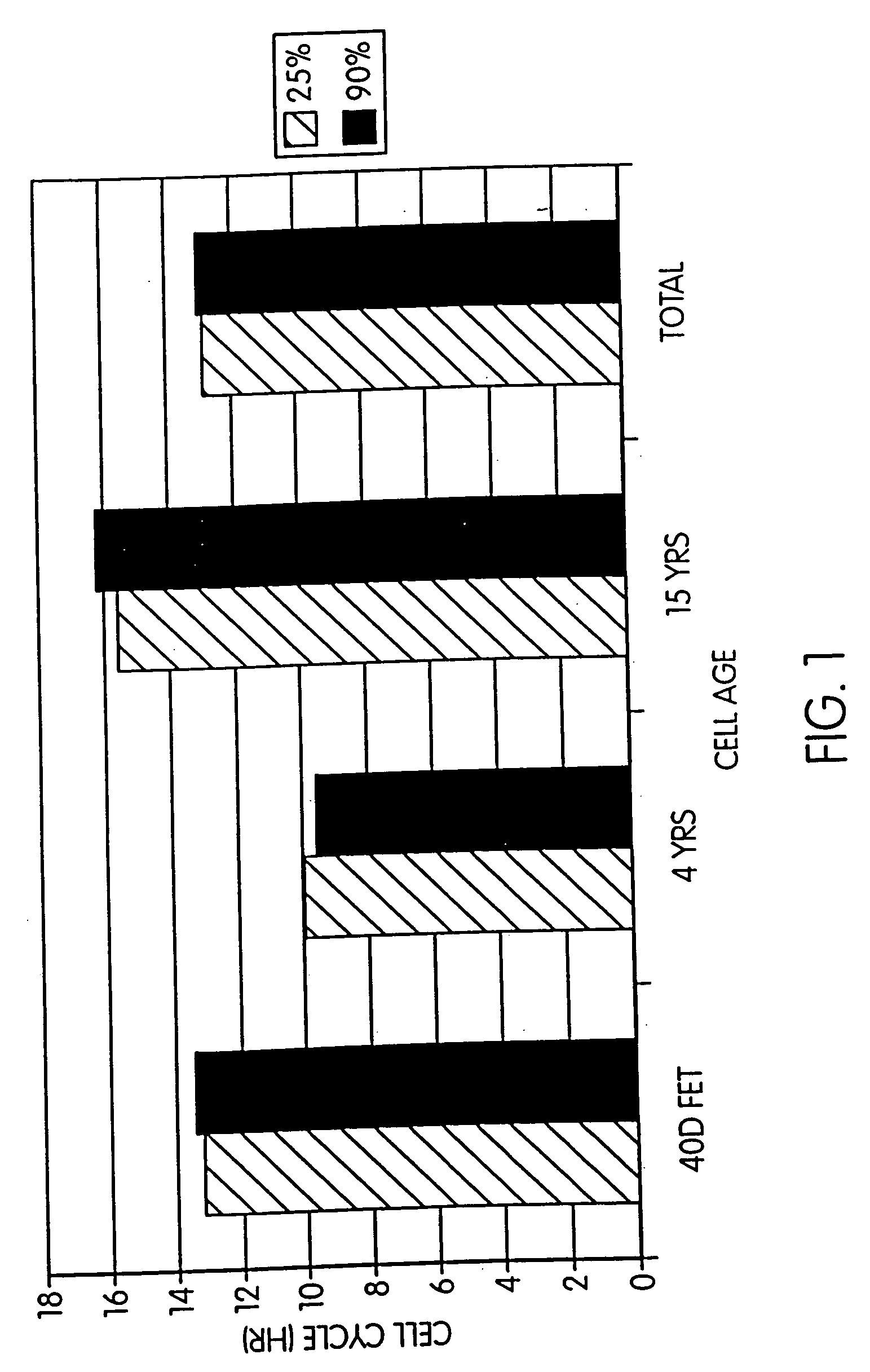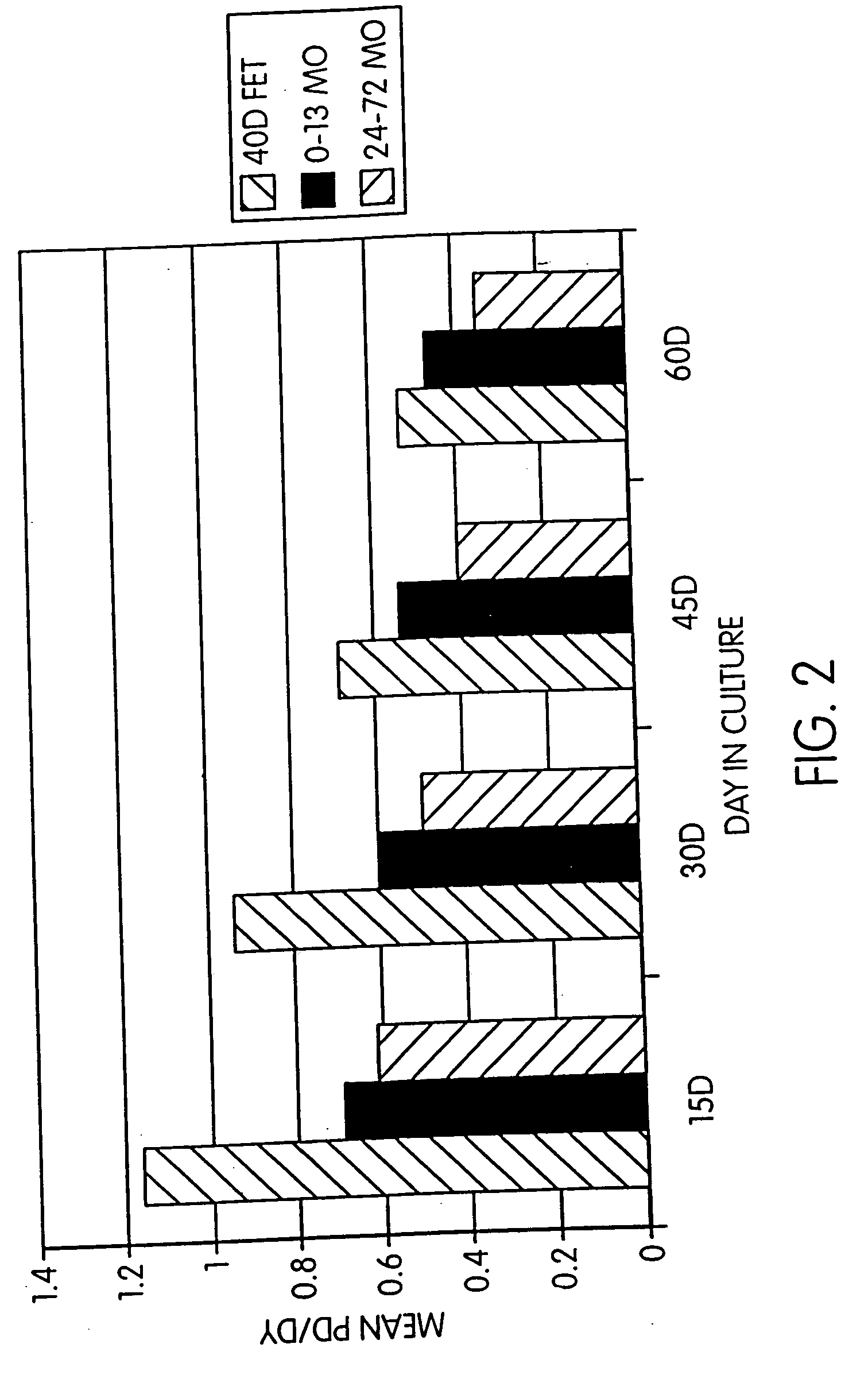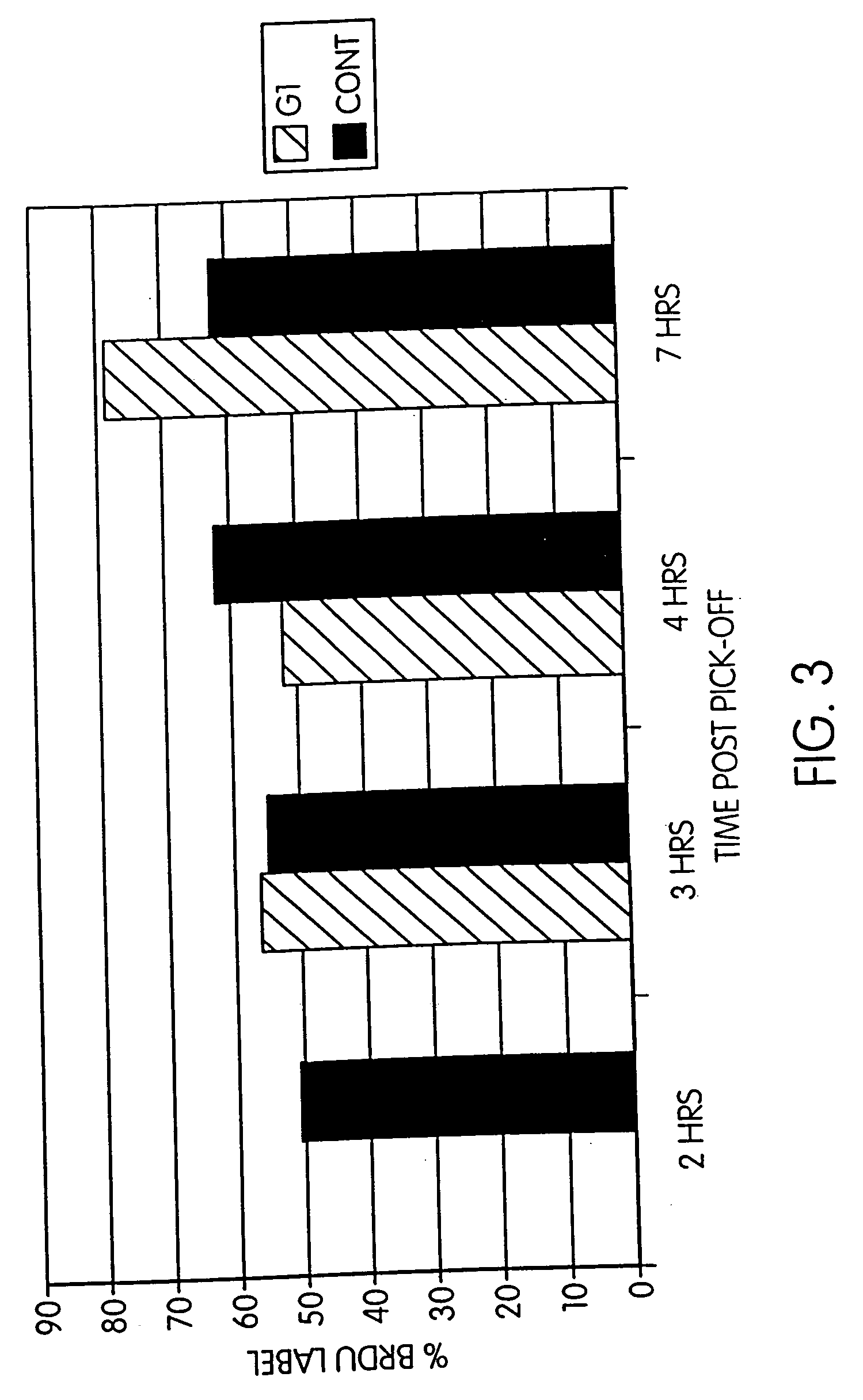Preparation and selection of donor cells for nuclear transplantation
a donor cell and nuclear technology, applied in the field of preparation and selection of donor cells for nuclear transplantation, can solve the problems of shake-off and doublet selection of somatic cells not being used in combination, toxic side effects of drugs such as aphidicolin or hydroxyurea, and achieve the effect of preventing floating in the culture media
- Summary
- Abstract
- Description
- Claims
- Application Information
AI Technical Summary
Benefits of technology
Problems solved by technology
Method used
Image
Examples
example 1
Effect of Confluency and Cell Age on Cell Cycle Length
[0087] Establishment offetal cell lines. Bovine fetuses were obtained from a slaughterhouse and the crown-rump length was measured. After washing in rinse solution (DPBS containing antibiotic / antimycotic (Sigma) and Fungizone (Gibco) and removing the head and internal organs, the remaining tissues were finely chopped into pieces, using scalpel blades. Tissue pieces were washed twice in rinse solution by allowing the pieces to settle to the bottom of 50 ml tubes and removing the supernatant. To the tissue pieces, 30-40 ml of 0.08% trypsin (Difco) and 0.02% EDTA (Sigma) in PBS (Gibco) was added, and the tissue incubated for 30 min. at 39° C., 5% CO2. At intervals of 30 mm., the supernatant was carefully removed and centrifuged in another tube for 5 mm. at 300×g. Then the tissue pieces were separated by removing the supematant, adding another 30-40 ml of 0.08% trypsin and 0.02% EDTA in PBS, and incubating the tissue samples again f...
example 2
Effect of Time in Culture and Donor Age on Cell Growth Rate
[0096]FIG. 2 demonstrates that increased time in culture for the cells obtained as described above, leads to a decrease in population divisions or doubling per day (PD / DY).
example 3
Length of G1 in Fibroblasts Recovered from Culture
[0097] Fibroblast cells were obtained, cultured and harvested as described in Example 1. FIG. 3 shows the length of G1 in fibroblasts recovered from culture after pick-off.
PUM
| Property | Measurement | Unit |
|---|---|---|
| Temperature | aaaaa | aaaaa |
| Fraction | aaaaa | aaaaa |
| Fraction | aaaaa | aaaaa |
Abstract
Description
Claims
Application Information
 Login to View More
Login to View More - R&D
- Intellectual Property
- Life Sciences
- Materials
- Tech Scout
- Unparalleled Data Quality
- Higher Quality Content
- 60% Fewer Hallucinations
Browse by: Latest US Patents, China's latest patents, Technical Efficacy Thesaurus, Application Domain, Technology Topic, Popular Technical Reports.
© 2025 PatSnap. All rights reserved.Legal|Privacy policy|Modern Slavery Act Transparency Statement|Sitemap|About US| Contact US: help@patsnap.com



